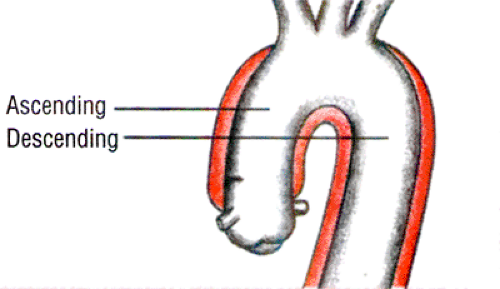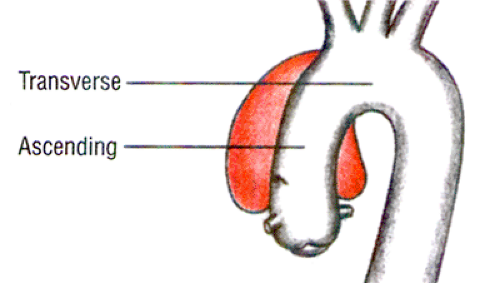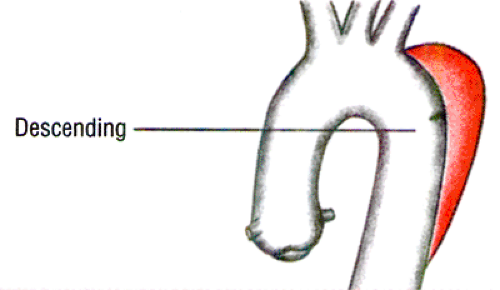Thoracic aortic aneurysm
Characterized by abnormal widening of the ascending, transverse, or descending part of the aorta, thoracic aortic aneurysm is a potentially life-threatening disorder. This aneurysm may be saccular—an outpouching of the arterial wall with a narrow neck, involving only a portion of the vessel circumference; or fusiform—a spindle-shaped enlargement encompassing the entire aortic circumference.
Dissection of the aneurysm is the circumferential or transverse tear of the aortic wall intima, usually within the medial layer. It occurs in about 60% of patients, is usually an emergency, and has a poor prognosis. (See Types of aortic dissection, page 888.
The ascending thoracic aorta is the most common site for the aneurysm, which occurs predominantly in men younger than age 60 who have coexisting hypertension. Descending thoracic aortic
aneurysms are most common in younger patients who have had chest trauma.
aneurysms are most common in younger patients who have had chest trauma.
TYPES of aortic dissection
These drawings illustrate the DeBakey classification of aortic dissections (shaded areas) according to location. Dissections can also be classified by their location in relation to the aortic valve. Thus, types I and II are proximal; type III, distal.
Type I
In type I dissection, the most common and lethal type of dissection, intimal tearing occurs in the ascending aorta and the dissection extends into the descending aorta.
Type II
In type II dissection, which appears most commonly with Marfan syndrome, dissection is limited to the ascending or the transverse aorta.
Causes
Commonly, ascending thoracic aortic aneurysm results from atherosclerosis, which weakens the aortic wall and gradually distends the lumen in this area.
Descending thoracic aortic aneurysm usually occurs after blunt chest trauma that shears the aorta transversely (acceleration-deceleration injury), such as in a motor vehicle accident, or a penetrating chest injury such as a knife wound. It also may be caused by hypertension.
Mycotic aneurysm develops from staphylococcal, streptococcal, or salmonella infections, usually at an atherosclerotic plaque.
Stay updated, free articles. Join our Telegram channel

Full access? Get Clinical Tree





